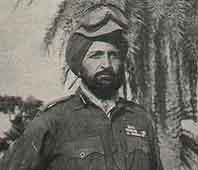Zojila
| Author:Laxman Burdak, IFS (Retd.) |

Zojila is a high mountain pass in the Himalayas in the Indian union territory of Ladakh. Located in the Dras, the pass connects the Kashmir Valley to its west with the Dras and Suru valleys to its northeast and the Indus valley further east.
Variants
Location
The National Highway 1 between Srinagar and Leh in the western section of the Himalayan mountain range traverses the pass. Zoji La is about 100 km from Srinagar, the capital of the Union territory of Jammu and Kashmir, and 15 km from Sonmarg. It provides a vital link between Ladakh and Kashmir Valley. It runs at an elevation of approximately 3,528 metres (11,575 ft), and is the second highest pass after Fotu La on the Srinagar-Leh National Highway.
First Kashmir War
During the First Kashmir War, Zoji La was seized by Gilgit rebels in 1948 in their campaign to capture Ladakh. The pass was recaptured by Indian forces on 1 November in an assault codenamed Operation Bison, which achieved success primarily due to the surprise use of tanks, then the highest altitude at which tanks had operated in combat in the world.[1]
Jat History

Maj Gen Rajinder Singh Sparrow (1911-1994) is recipient of MVC in 1948 and 1965 Indo Pak wars for his bravery. [2]
In 1948, Pakistani invaders occupied the 11000 ft high Zoji La Pass. It was found difficult to dislodge them. Major General K S Thimayya, DSO decided to send tanks to surprise the enemy. Lt. Col. Rajinder Singh, CO of 7th Light Cavalry achieved the unique task of taking his tanks on the pass in spite of overwhelming odds. The enemy was completely surprised and abandoned the pass. This was a record of highest altitude for employment to tanks. Lt. Col Rajinder Singh was awarded M V C.
References
- ↑ Sinha, Lt. Gen. S.K. (1977). Operation Rescue:Military Operations in Jammu & Kashmir 1947–49. New Delhi: Vision Books. pp. 103–127. ISBN 81-7094-012-5.
- ↑ Ram Sarup Joon: History of the Jats/Chapter XIII, p. 234

